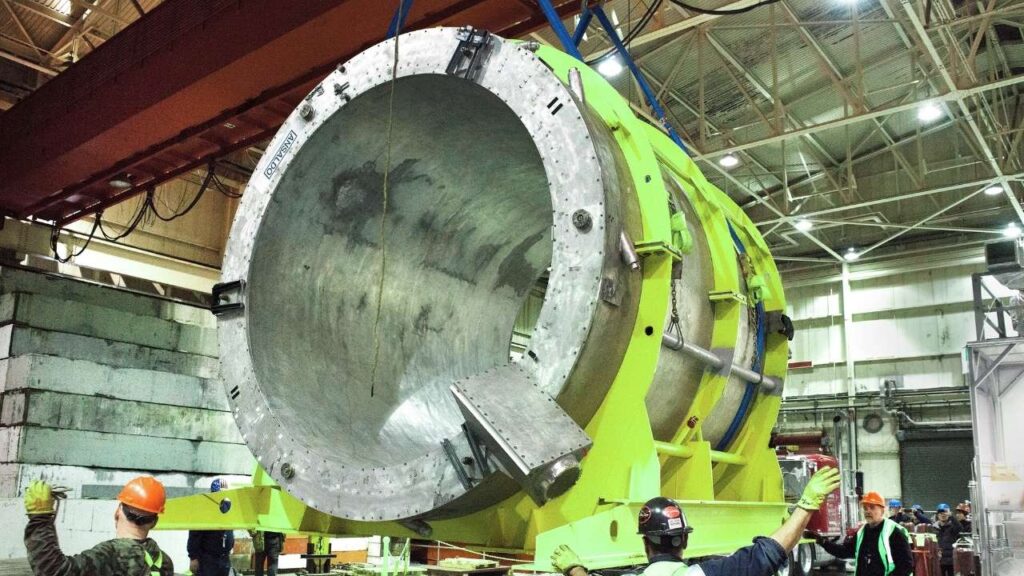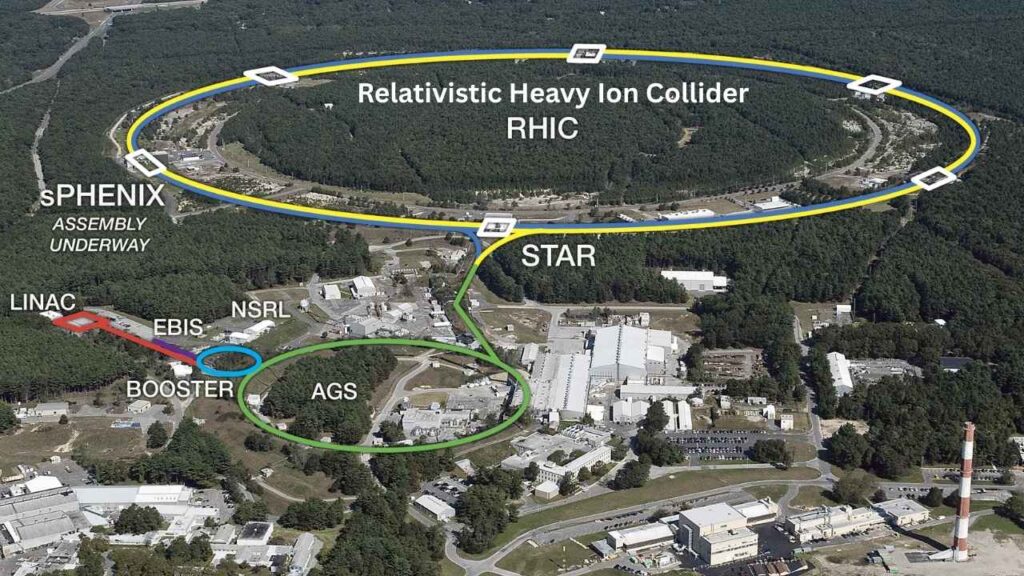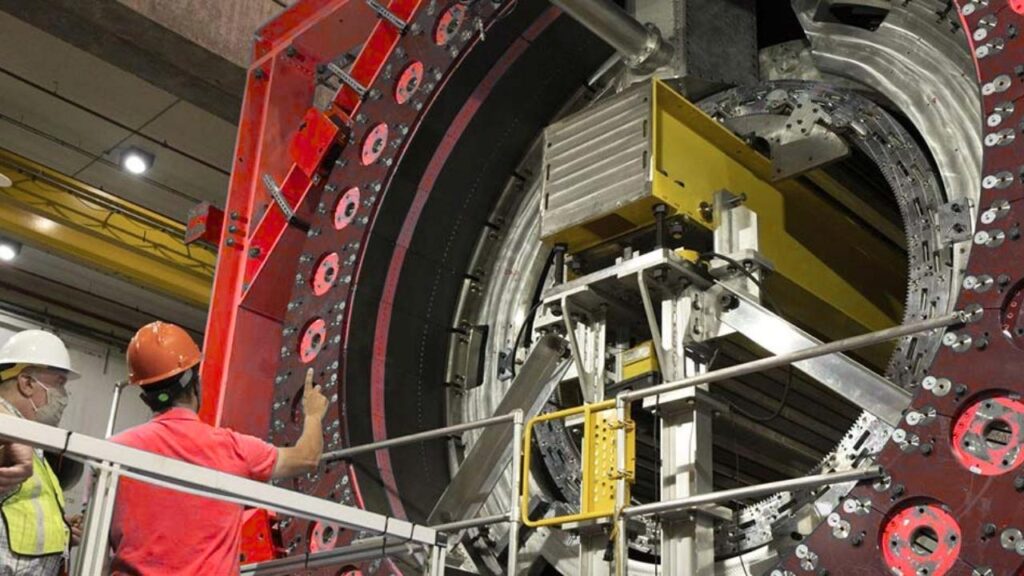Scientists and engineers across the United States are currently undertaking an awe-inspiring task: moving massive research magnets across the country to power new, groundbreaking experiments. These magnets are nothing like everyday refrigerator magnets—they are enormous, highly complex, and incredibly powerful electromagnets designed to steer and manipulate subatomic particles in advanced scientific facilities. By repurposing these magnets instead of building new ones from scratch, national laboratories achieve huge cost savings while pushing the boundaries of fundamental physics, materials science, and quantum research.

The recent journeys of these massive electromagnets illustrate a fascinating story of science, logistics, and collaboration. From the Relativistic Heavy Ion Collider (RHIC) at Brookhaven National Laboratory to the Fermi National Accelerator Laboratory (Fermilab) in Illinois, these magnets are traveling across highways, waterways, and rivers to enable experiments that deepen humanity’s understanding of the universe’s smallest building blocks.
Table of Contents
Massive Research Magnets Are on the Move for Groundbreaking Experiments
| Topic | Details and Stats |
|---|---|
| Type of magnets | Massive superconducting electromagnets used in particle accelerators and detectors |
| Notable Magnet Relocation | 17-ton, 50-foot diameter Muon g-2 storage ring moved from Brookhaven (NY) to Fermilab (IL) |
| Cost Savings | Reusing magnets saves millions; a 30,000-pound solenoid magnet valued at ~$12M reused from SLAC’s BaBar experiment |
| Scientific Impact | Enhanced measurements of particle properties and nuclear physics experiments; supports Electron-Ion Collider (EIC) development |
| Transportation Challenges | Required road closures, boat transport around Florida, stops in supermarket parking lots; meticulous planning by teams |
| Lab Collaborations | Teams from Brookhaven, Fermilab, CERN, and other institutions coordinated to move, test, and reuse magnets |
Massive research magnets are unsung heroes of today’s most groundbreaking experiments. The relocation of these magnetic giants is a testament to human ingenuity and teamwork. By repurposing them for new scientific challenges, national laboratories not only save resources and protect the environment but also accelerate the pace of discovery, bringing us closer to understanding the hidden workings of our universe.
What Are These Massive Research Magnets?
At the heart of many particle accelerators and cutting-edge physics experiments lie superconducting electromagnets. Unlike typical magnets, these large-scale magnets can produce magnetic fields that are precisely controlled by adjusting the electric current running through them. This precision allows scientists to manipulate streams of charged particles such as protons, electrons, and muons with extreme accuracy.

The Relativistic Heavy Ion Collider (RHIC) at Brookhaven uses these electromagnets to steer and focus beams of particles moving close to the speed of light. The Muon g-2 experiment employs a large magnetic storage ring to study the anomalous magnetic moment of the muon, a tiny but fundamental subatomic particle. The upcoming Electron-Ion Collider (EIC) will be the first of its kind, designed to explore the internal structure of protons and neutrons by colliding electrons with ions.
These magnets are so complex and large that building them from scratch can take many years and cost tens of millions of dollars. Repurposing older magnets for new experiments is both a practical and sustainable solution.
Why Are These Magnets on the Move?
Many of the magnets currently in transit were originally built for experiments that have recently concluded or upgraded. Instead of leaving these valuable instruments unused, researchers give them new life in next-generation projects. This approach not only saves millions but also speeds up discoveries.
For example, the Muon g-2 storage ring, a 17-ton, 50-foot-wide electromagnet, was first used at Brookhaven. In 2013, it was moved to Fermilab to conduct a more advanced version of the experiment. Similarly, the sPHENIX experiment at Brookhaven reused a 30,000-pound superconducting solenoid magnet from SLAC’s BaBar experiment, saving an estimated $12 million.

How Do They Move These Giant Magnets?
Transporting these colossal magnets is a delicate and highly coordinated engineering challenge. Here’s how it typically works:
Planning the Route
Transport routes are selected with precision to ensure safety, often involving temporary road closures and collaboration with local authorities.
Multi-Modal Transport
Due to their size, magnets may travel part of the way by truck and part of the way by ship or barge. The Muon g-2 magnet, for instance, traveled by boat down the East Coast, around Florida, and up the Mississippi River.
Overnight Trucking with Strategic Stops
On land, large magnets sometimes travel only at night to reduce disruption. Daytime stops are carefully planned, often in secure parking areas.
Rigorous Testing Upon Arrival
Once a magnet reaches its destination, it undergoes extensive testing to confirm that it remains in perfect condition and retains its required magnetic properties.
Why Repurposing Magnets Matters
Cost and Time Savings
Building new superconducting magnets from the ground up is expensive and time-consuming. By reusing them, labs save millions and accelerate project timelines.
Environmental Benefits
Reusing equipment reduces the need for new raw materials like copper and rare earth metals, which have significant environmental extraction costs.
Advancing Science Faster
With ready-to-use magnets, researchers can get to work on world-class experiments sooner, from studying quantum materials to improving particle therapy for cancer treatment.
Practical Advice for Aspiring Scientists & Engineers
If you’re interested in working in this exciting field:
- Study physics, electrical engineering, or materials science to understand the principles behind electromagnets.
- Pursue internships or fellowships at national laboratories where you can learn hands-on skills.
- Understand logistics and project management, as moving such equipment requires more than just scientific knowledge.
- Stay open to interdisciplinary collaboration, as these projects combine expertise from many scientific and engineering domains.
Superconducting Magnets Detect Gravitational Waves—A New Way to Observe the Universe
Scientists Use Powerful Magnets to Search for High-Frequency Gravitational Waves
A Mirror Universe Might Be Warping Our Gravity — Scientists Shocked by the Clues
FAQs About Massive Research Magnets Are on the Move for Groundbreaking Experiments
Q1: What makes these electromagnets different from regular magnets?
They produce controllable magnetic fields through electrical currents, allowing scientists to fine-tune strength and direction for complex experiments.
Q2: Why not build new magnets instead of moving old ones?
It saves millions of dollars and years of work, enabling faster scientific progress.
Q3: How do teams keep magnets safe during transport?
Specialized transport systems, cautious driving, and safety checks prevent damage.
Q4: What discoveries will these magnets help make?
They contribute to breakthroughs in particle physics, quantum materials, and medical accelerator technology.
Q5: Do magnets last forever?
They can last decades with proper maintenance, sometimes with occasional upgrades.



















